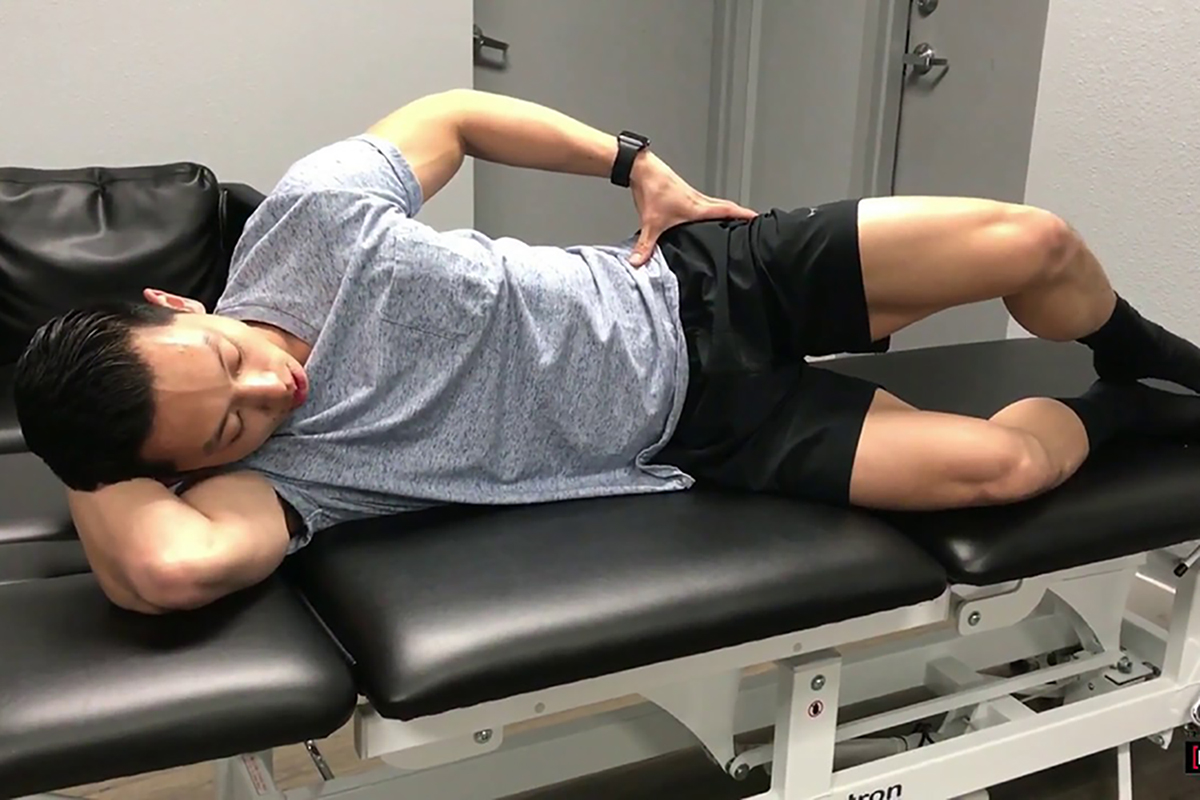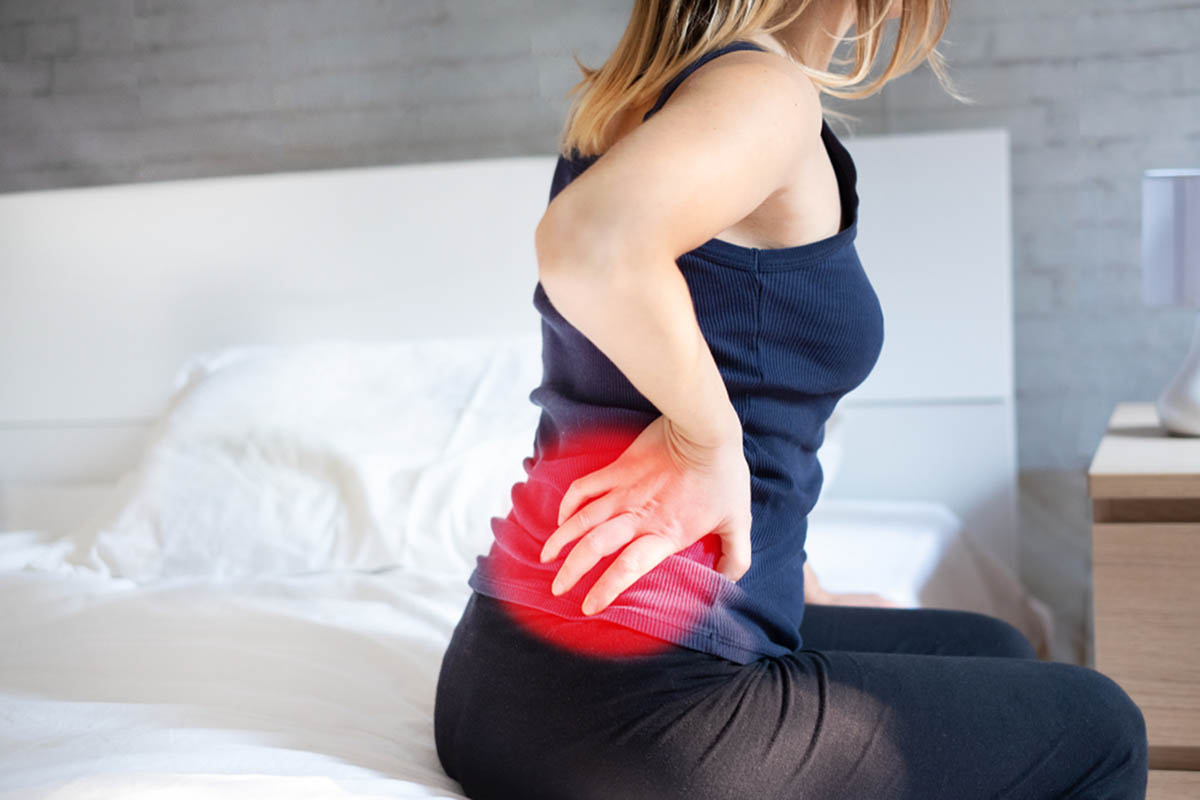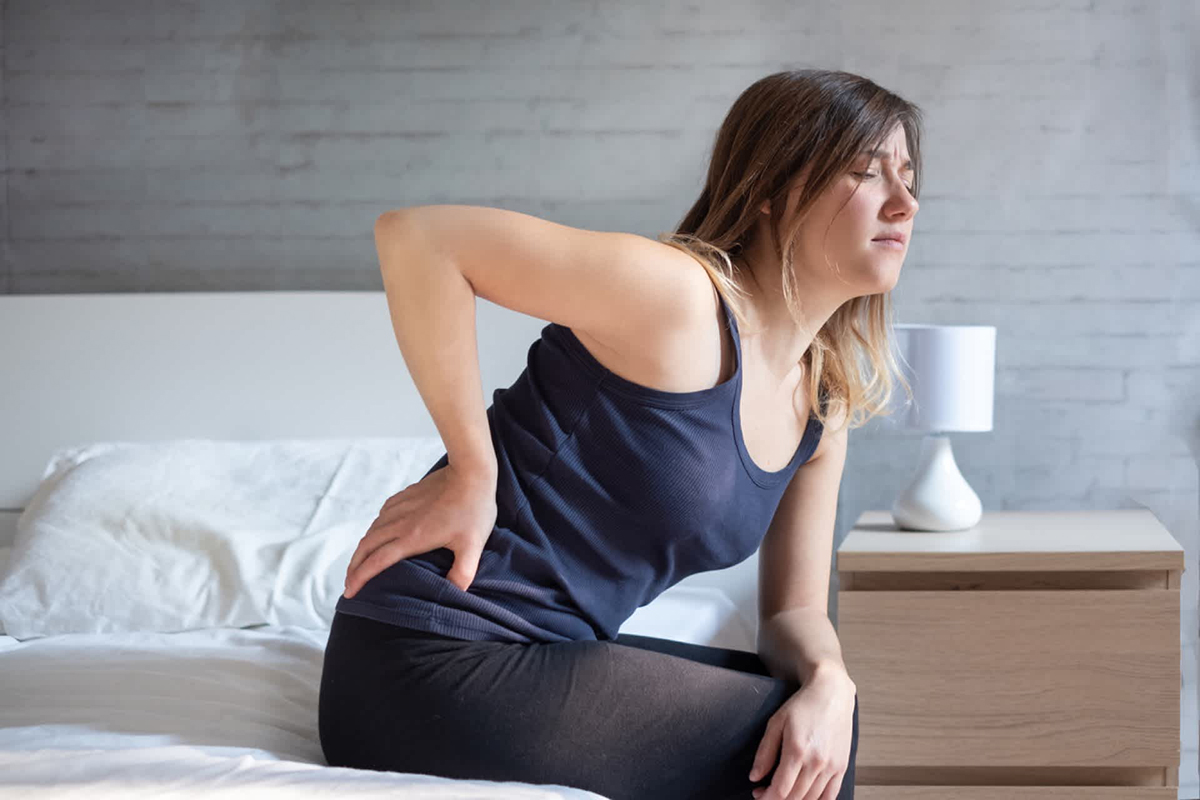Hip pain can be a debilitating issue, affecting not only your comfort but also your daily activities and overall quality of life. Addressing anterior hip pain exercises promptly and effectively is crucial for maintaining functional mobility and preventing complications. Progressive Mobility Physio & Performance is pivotal in alleviating hip pain, enhancing strength, and improving flexibility. In this blog, we’ll explore some of the best therapeutic exercises for hip pain relief, helping you regain control over your movements and comfort.
Common Causes of Hip Pain
Hip pain can stem from various underlying issues, each necessitating tailored management strategies. It’s no surprise that hip pain is a common problem in teenage athletes who often experience discomfort due to muscle pain or conditions like rheumatoid arthritis. Common culprits include osteoarthritis, a degenerative joint condition that gradually erodes cartilage in the knee joint; bursitis, characterized by inflammation of the fluid-filled sacs that cushion bones and tendons; and tendonitis, which involves inflammation of the hip tendons often resulting from overuse or strain. Additionally, tight hip flexors can cause discomfort due to injury or excessive activity in the muscles in people, while labral tears, which involve damage to the cartilage lining the hip joint, may arise from trauma or wear over time. Identifying the root cause of your anterior hip pain is crucial for determining the most effective physical therapy for hip pain exercises.
Symptoms of Hip Pain
Hip pain can present in diverse manners, rooted in the specific underlying condition. The prevalence of hip pain in the general population is 10%, increasing with age. In a published study, 14.3% of adults reported significant chronic pain on most days over the previous six weeks. Typical symptoms include discomfort or aching in the hip joint, ranging from sharp to dull sensations. Intense pain often accompanies this discomfort, making it challenging to move the hip, particularly following periods of inactivity.
Additionally, inflammation around the joint mobility may lead to visible swelling. Individuals may also experience a limited range of motion, hindering their ability to bend or rotate the hip effectively. Furthermore, the pain can radiate to the upper thigh or groin, causing discomfort beyond the hip.
Are Physical Therapy Exercises Effective for Hip Pain Relief?
Mobility physical therapy for hip pain exercises can remarkably effectively alleviate hip pain, explicitly targeting the musculature surrounding the hip joint. These exercises offer many benefits by enhancing strength, flexibility, and overall joint mobility. They build muscle care to provide better support and stability, improve flexibility to increase the range of motion, lessen stiffness, and enhance the overall function of the hip joint, thereby reducing discomfort. Furthermore, by strengthening and conditioning the muscles in people with hip pain, these exercises also play a crucial role in preventing future injuries and complications related to anterior hip pain.
Best Physical Therapy Exercises for Hip Pain
Hip pain can be debilitating, affecting everyday activities and quality of life. Specific hip physical therapy exercises can help alleviate discomfort, strengthen surrounding muscles, and improve mobility.
Donkey Kicks
Donkey kicks are an effective exercise that targets the gluteus muscles and strengthens the hip muscles. To perform this move, start on all fours, keeping your upper body straight. Lift one leg towards the ceiling while keeping the knee joint bent, then lower it down without touching the floor.
Benefits:
The donkey kick exercise strengthens the glutes and lower back and enhances hip stability and balance.
How to perform:
Start on all fours, ensuring your hands are positioned directly under your shoulders, and your knees are aligned beneath your hips. Raise your right leg toward the ceiling, maintain a bent knee, and lower it back down without allowing it to touch the ground. Aim for 10-15 repetitions before switching to the left leg.
Leg Swings
Leg swings are a great dynamic stretching exercise that improves hip mobility and flexibility. To perform this exercise, stand beside a wall or support for balance, then swing one leg forward and backwards in a controlled manner, gradually increasing the range of motion.
Benefits:
Leg swings improve hip flexibility and increase the overall range of motion. This exercise also helps to release tension in tight hip muscles.
How to perform:
Position yourself next to a wall or a sturdy support to maintain balance. Gently swing your right leg forward and backwards in a controlled manner, aiming to complete 10-15 swings before switching to the left leg.
Hip Squeeze

The hip squeeze strengthens the adductor muscles and enhances hip stability and support. To perform this exercise, sit on a chair with a small ball or cushion between your knees and gently squeeze it for 5 seconds before relaxing.
Benefits:
Strengthens the inner thigh muscles while enhancing hip stability. This exercise promotes better support for the hip joint.
How to perform:
Lie on your back with your knees bent and feet flat on the floor, placing a small ball or cushion between your knees. Squeeze the ball together with your knees, holding the contraction for 5 seconds before releasing. Aim for 10-15 repetitions to strengthen your inner thigh muscles and enhance hip stability effectively.
Hip Hinge
The hip hinge is an essential movement pattern that focuses on bending at the hips while maintaining a neutral spine, which is crucial for proper lifting mechanics. This exercise helps to strengthen the posterior chain, including the gluteus maximus and hamstrings, while reducing strain on the lower back.
Benefits:
This exercise effectively strengthens the posterior chain, mainly targeting the glutes and hamstrings. Additionally, it enhances hip movement and flexibility.
How to perform:
Begin by standing with your feet hip-width apart and your knees slightly bent. As you hinge at your hips, push your buttocks back while ensuring that your back remains straight throughout the movement. After reaching the desired position, return to the starting stance. Aim to perform 10-15 repetitions for optimal posterior chain strengthening.
External Hip Rotation
External hip rotation is an effective exercise for improving hip mobility and strengthening the external rotator muscles. This movement enhances overall hip stability and aids in relieving pain through increased flexibility.
Benefits:
This exercise improves hip stability and mobility while strengthening the hip rotator muscles. It is vital for enhancing overall hip functionality.
How to perform:
To perform the external hip rotation exercise, lie on your back with your knees bent and your feet flat on the floor. Next, place a resistance band around your knees and push your knees outward against the band’s resistance. After reaching the outer position, return to the starting stance. Repeat this movement for 10-15 repetitions to enhance hip mobility and strengthen the external rotator muscles.
Hip Flexion
Hip flexion is a fundamental movement that helps improve mobility in the hip joint while strengthening the hip flexor muscle. This exercise is particularly beneficial for those experiencing tightness or discomfort in the hip region.
Benefits:
This exercise strengthens the hip flexors, which play a crucial role in hip movement. Additionally, it enhances overall mobility in the hip joint.
How to perform:
Begin by lying flat on your back with your legs extended. Slowly raise one leg towards your chest while keeping it straight, then lower it back down without allowing it to touch the floor. Aim to complete 10-15 repetitions for each leg to strengthen your hip flexors and improve overall mobility effectively.
Bridge
The bridge exercise is an excellent way to strengthen the gluteus maximus and improve hip stability. To perform it, lie on your back with your knees bent and feet flat on the floor. Then, lift your hips toward the ceiling, hold briefly, and lower back down for 10-15 repetitions.
Benefits:
Strengthens the glutes, lower back, and core while enhancing hip stability. This exercise promotes better functional movement and posture.
How to perform:
To perform the hip squeeze, lie on your back with your knees bent and your feet flat on the floor. Engage your core and lift your hips off the ground, creating a straight line from your shoulders to your knees. Hold the position briefly, then lower your hips back down to the mat. To strengthen the hip muscles effectively, aim for 10-15 repetitions.
Mini Squat
The mini squat is a lower-body exercise that helps build strength in the thighs and gluteus maximus muscles while promoting hip stability. To perform this exercise, stand with your feet shoulder-width apart and lower your hips into a squat position, ensuring your knees don’t extend past your toes, then return to standing for 10-15 repetitions.
Benefits:
This exercise strengthens the quadriceps and glutes while promoting better hip stability. It is an effective way to support overall lower body strength.
How to perform:
Begin by standing with your feet shoulder-width apart. Lower your body into a squat while ensuring your knees stay aligned with your toes, then return to the starting position. Aim to complete 10-15 repetitions.
Clamshell Exercise
The clamshell exercise targets the gluteus medius muscles, helping to strengthen the hip muscles and improve stability. To perform, lie on your side with your knees bent, then lift the top knee while keeping your feet together before lowering it down for 10-15 repetitions.
Benefits:
This exercise focuses on strengthening the gluteus medius and minimus. As a result, it enhances hip stability.
How to perform:
To perform the clamshell exercise, lie on your side with your knees bent and your feet together. Keeping your feet touching, lift your top knee towards the ceiling, then lower it back down. Aim to complete 10-15 repetitions on each side to engage and strengthen your hip muscles effectively.
Side-Lying Leg Raise
The side-lying leg raise is an effective exercise that targets the hip abductors, particularly the gluteus medius. To perform, lie on your side with your legs extended straight; lift the top leg towards the ceiling while keeping it straight, then lower it back down for 10-15 repetitions on each side.
Benefits:
This exercise strengthens the outer hip muscles, contributing to improved hip stability. Additionally, it helps enhance balance, making it beneficial for overall mobility.
How to perform:
To perform the side-lying leg raise, lay flat on your side with your legs extended straight. Lift your top leg at a 45-degree angle, keeping it straight throughout the movement, then slowly lower it back down. Aim to complete 10-15 repetitions for each leg to strengthen the hip abductors and improve stability effectively.
Heel-to-Buttock Exercise
The heel-to-buttock exercise strengthens the quadriceps muscle while improving hip joint flexibility. To perform it, stand and bend one knee to bring your heel towards your buttocks, holding the stretch for a few seconds before lowering your foot back down.
Benefits:
Strengthens the hamstrings while enhancing flexibility in the hip joint. This exercise also promotes better hip mobility.
How to perform:
To perform the heel-to-buttock exercise, lay flat on your stomach with your legs extended straight behind you. Bend one knee to lift your heel toward your buttock, then lower your leg back to the starting position. Repeat this movement for 10-15 repetitions on each leg to strengthen your hamstrings and improve hip flexibility.
Hip Abduction
The hip abduction exercise targets the muscles that move your leg away from your body. To perform, stand straight and slowly lift one leg to the side while keeping it straight, then lower it back down, aiming for 10-15 repetitions on each side.
Benefits:
This exercise effectively strengthens the hip abductors, crucial in maintaining balance. Additionally, it enhances overall hip stability for improved mobility and function.
How to perform:
To perform the hip abduction exercise, stand with your feet shoulder-width apart. Next, lift one leg straight to the side, extending it throughout the movement. Once you reach the top of the lift, lower your leg back down to the starting position. Aim to complete 10-15 repetitions on each side to strengthen the hip abductors and enhance your overall stability effectively.
Chair Stand

The chair stand exercise is designed to improve leg strength and hip stability. To perform it, sit on the edge of a chair, lean slightly forward, and stand up without using your hands. Then, lower yourself back down to the seated position, repeating for 10-15 reps.
Benefits:
This exercise strengthens both the legs and hips. Additionally, it enhances overall mobility and balance.
How to perform:
To perform the chair stand exercise, sit on the edge of a chair with your feet flat on the floor. Using your legs and hips, stand up from the chair and slowly lower yourself back to seated. Aim to complete 10-15 repetitions to strengthen your legs and hips effectively while improving overall mobility and balance.
Precautions Before Starting Exercises for Hip Pain
Taking certain precautions is essential before starting any exercise program for hip pain. First, consult a healthcare professional for an accurate diagnosis and personalized physical therapy for a hip pain routine suited to your condition. Begin with gentle stretches and gradually increase the intensity to prevent aggravating your pain. Finally, always listen to your body; stop immediately if you experience discomfort or pain during the exercises.
Exercises to Avoid with Hip Pain
Specific exercises, such as high-impact activities such as running or jumping that put undue stress on the hip joint can worsen hip pain and should be avoided. Additionally, deep squats can exacerbate pressure on the hip, leading to discomfort, while lunges—mainly when performed with improper form—can also strain the hip joint and potentially aggravate existing pain.
Conclusion
Addressing hip pain through physical therapy exercises is an effective strategy for relief and improved functional mobility. By incorporating targeted exercises such as donkey kicks, leg swings, and bridges, you can strengthen the muscles in people around the hip, enhance flexibility, and reduce pain. Always consult a healthcare professional before starting any new exercise regimen to ensure it’s appropriate for your condition.
FAQ’S
Should you stretch if you have hip pain?
Hip stretches can help with hip pain, significantly improve flexibility, and reduce muscle tightness. However, choosing gentle stretches that do not aggravate your pain is important. Always consult a physical therapist to ensure you’re performing the proper stretches.
What therapy is best for hip pain?
The best therapy for hip pain often includes physical therapy exercises, stretching, and strengthening routines tailored to your specific medical condition. Your healthcare provider can recommend the most effective treatment based on your needs.
Can physical therapy cure hip pain?
Physical therapy can significantly alleviate hip pain and improve function, but whether it cures the pain entirely depends on the underlying medical condition. It is crucial to managing and treating hip pain but may be combined with other treatment approaches for comprehensive relief.



